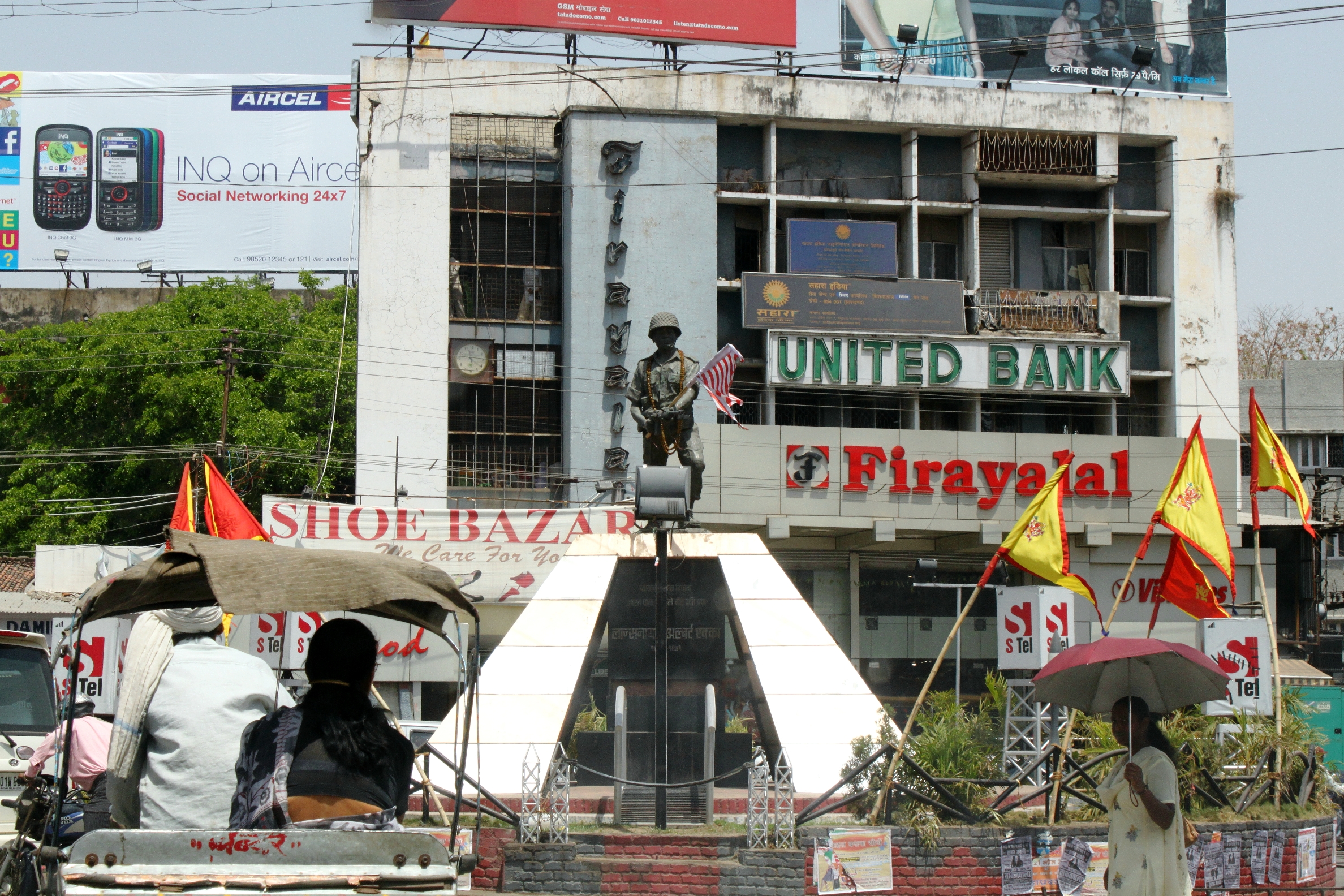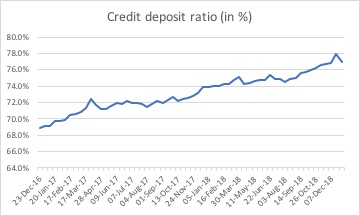
January 21, 1994.
Govinda is the reigning kind of the Hindi film industry. His latest film Raja Babu has just arrived.
The first day first show is playing at the Sujata Cinema, the biggest movie theatre in Ranchi, at that point of time. I happen to be there along with a bunch of friends.
It’s around one PM. The house-full crowd is rather subdued. The movie has dragged on for nearly two hours.
And then as often happened in David Dhawan movies, Govinda and Karishma Kapoor, the heroine of the movie, for no rhyme or reason whatsoever, start to dance to a song.
The song on which they are dancing, happens to be sarkaaye leyo khatiya jaada lage, one of the biggest hits of the 1993 and 1994. The crowd at Sujata Cinema is in raptures. There are whistles and catcalls and people are dancing in the aisles. The paisa vasool movement for which many of whom had lined up at eight AM in the morning for an 11AM show, has come.
December 21, 2018.
It’s a cold and a hazy December morning. I happen to be in Ranchi for the 25th anniversary celebrations of the class of 1993 of St. Xavier’s School. Not much is scheduled for the day with the festivities starting only in the late evening. There is time to kill.
Carnival Cinema, one of the many multiplexes to have opened up in the city, since I left it in late 1999, is playing Shah Rukh Khan’s latest release Zero. I walk in and buy a ticket which costs Rs 150. In 1994, a dress circle ticket at Sujata Cinema, cost Rs 11, the most expensive in the city back then. The popcorn cost two bucks more.
SRK in 2018, does everything that Govinda did in 1994, except for singing a double meaning song. He sings. He dances. He tries to woo the heroines. He even goes to Mars. But all this doesn’t impress the audience.
There is no whistling. No catcalls. And no dancing in the isles. All I get to hear is intermittent clapping of the kind the 1994 audience indulged in, when it was bored.
The cinema audience has been gentrified.
*****
In 1999, Ranchi did not have a single multiplex. Now, the big multiplex chains, PVR, Carnival, Fun Cinemas etc., all have presence in the city. The heydays of single screen cinemas is over.
Sujata Cinema (now known as Sujata Picture Palace) is a shadow of its former self. Shree Vishnu Cinema, the one closest to St. Xavier’s College in Ranchi, where I studied, is now a hotel.
It’s at Shree Vishnu Cinema, I realised how big a star Mamata Kulkarni was in the 1990s. When she sang Chudiyan Bajaoongi, Prem Dhun Gaoongi, on the big screen, an entire generation was mesmerised. And then she disappeared from public memory, as if she had never been there.
Sandhya Cinema is now SRS Cinema. Vasundhara Cinema, where Nadiya Ke Paar, the original Hum Aapke Hain Koun, ran for all of 52 weeks, has been broken down and in its place stands a tower.
Capitalism has killed all the places where I built the best memories of my growing up years.
Of course, like any other small city in India, Ranchi had a couple of theatres which only showed adult movies; Mini Sujata and Plaza. While, for an average Indian, roti, kapada aur makaan, still remains an issue, we have no such problems when it comes to cheap bandwidth. Watching porn, which used to be a community activity in a public space, is a very individual activity carried out in the privacy of a home. Ranchi is no different on that front.
*****
I walk out of Carnival Cinema, on to Ranchi’s main road, which is rather imaginatively called, the Main Road (The official name of the road is Mahatma Gandhi road, but try asking for directions using that name).
Right opposite Carnival Cinema stands GEL Church Shopping Complex. Back in the 1990s, this was closest that Ranchi had to a mall. Rather ironically, it was owned by the Church (the Gossner Evangelical Lutheran (GEL) Church to be very precise). It’s here that I was hanging out sometime in 1995 or 1996 perhaps, that I discovered Altaf Raja singing Tum to Thehre Pardesi.
A cassette shop was playing the song in a loop. When I got into the shop to buy the cassette, I was told there was huge demand for the cassette and hence, it was selling at a premium, in black. I paid Rs 25 for a twenty rupee cassette. There’s nothing to be surprised about here, we were still in the 1990s, when, even music cassettes sold in black.
Ranchi had a whole host of cassette shops at that point of time with Chawla Radio being one of the most famous of the lot. Of course, no one buys cassettes or for that matter music anymore. And the record for Tum to Thehre Pardesi being the highest selling non-film Hindi album of all time, still stands. Many of the erstwhile cassette shops have either shutdown or moved on to selling electronic products, everything from TVs to mobile phones. The free market has been at work.
*****
The GEL Church Shopping Complex housed Ranchi’s most famous restaurant Kaveri. I walk into the restaurant and order an American Choupsey and a Paneer Chilli, dishes that I used to feast on, back in the 1990s. The Paneer Chilli is still as divine as it used to be. It will be fair to say, I have eaten better American Choupsey at other places, since then.
While Kaveri is still going strong and even has branches, there are other popular restaurants which have sprung up in the city. A small survey among the locals tells me that the Yellow Sapphire, Breaking Bread, Nirvana and Prana, are quite popular in the city these days.
The other thing that has happened on the food front, is the rise of branded Litti and Chokha stalls, led by the famous Bhola Litti, an eating joint many of my friends swear by. Bhola’s litti is made in ghee and the dough is mixed with curd to soften it. With this, what used to be poor man’s food has been turned into a middle class delight. What do they say about India and jugaad?
Also, Ranchi has proper shopping malls these days, with the Nucleus Mall being the most popular mall of them all.
The city barely had a culture of eating out in the 1990s. Things have changed on this front. The economic growth since 1991 has clearly helped. But more than that Ranchi becoming the capital of the state of Jharkhand in 2000, has played a greater role.
This has had other benefits as well than just people earning more and eating out more often. The roads in the city are much better than they used to be.
I grew up on Kanke Road, the road which ultimately ends in Kanke, where the Central Institute of Psychiatry, Ranchi’s famous mental asylum is located. The road used to be full of potholes and a section of the road was famously referred to as Kharkhardiya Chowk, for the infinite-number of potholes it used to have. All that has disappeared now.
The highway to Patratu, of which Kanke Road is a part, can give any national highway a run for its money on the quality front, and so can the beauty of the drive. The city now also has a ring road to ease the traffic congestions within the city. Old timers say that it used to be possible to move from one end of Ranchi to another in 20-30 minutes. Now it can even take up to two hours. The traffic and the city have both expanded.
The power situation in the city has also improved considerably. The story that one used to here in the 1990s was that the power produced in the power plants of Jharkhand was largely transmitted to north Bihar (now just Bihar). Now the city gets its fair share of power.
The Ranchi I grew up in was constantly facing load shedding. In May 1992, the city saw a 15-day power cut. The power lines from the Patratu Power Plant which supplied power to the city were pulled down due to strong winds and it took more than two weeks for the situation to come back to normal.
*****
I soon see a Café Coffee Day (CCD), in the Capitol Hill building, right opposite where the Ratan Cinema, another single screen theatre, used to be.
A quick Google search tells me Ranchi now has six CCDs. At least, for those who can spend money, dating and hanging out with friends, is now easier. When I was a student of St. Xavier’s College, hanging out meant standing in front of the tea stall outside college, having tea and smoking (for those who did) and watching the world pass by.
Of course, we had ample time back then to waste, with the Ranchi University session running a year late, and a three year graduation taking four years to complete. Ranchi University now largely runs on time. This is yet another benefit of the state of Jharkhand being carved out of Bihar.
Before, the situation started to deteriorate in the mid 1980s, Ranchi was the original Kota, sending many students to the IITs, vis a vis its size. The story goes that in the year 1983, 73 students from St. Xavier’s College made it to the IITs. This was a time, when there were just five IITs. The city was clearly punching above its weight. The IIT baton passed from Xavier’s to DAV Jawahar Vidya Mandir (now just Jawahar Vidya Mandir), with many students from the school regularly qualifying for the IITs, through the 1990s. The trend continues.
*****
I continue walking on Main Road, and see many of Ranchi’s iconic shops, from Ved Textiles to Jevar Jewellers to Frontier Fruitstore to Punjab Sweethouse to Wool House.
They all continue to be in existence. Except for perhaps Frontier Fruitstore, they have all had to slightly rejig their business models over the years to continue to be in existence. Take the example of Wool House. This was the shop women went to buy wool to knit sweaters, as did my mother, my grandmother and my aunt. Of course, no one knits sweaters anymore. So, no one buys wool anymore. Wool House, now sells everything from T-Shirts to sweaters to blankets.
Fine Tailoring, the tailoring shop my father and my maternal grandfather swore by, also continues to be in existence. But along with the old there is the new. Big Bazaar, Shoppers Stop, Manyavar, Pantaloons etc., all have a presence in Ranchi. And that’s another benefit of becoming a state capital. The choice available to people has clearly gone up.
But Ranchi continues to be weak on the industry front, though things seem to be gradually changing. The current chief minister Raghubar Das is betting on making Ranchi a textile hub. Arvind Ltd. has a factory in Ranchi.
Also, Ranchi has a software park (STPI), where business are being established. Having said that the IT industry in Ranchi is at its very nascent stage. This is surprising given that the city has excellent weather and a reasonably good education system in place.
But on the whole, like many other cities of its size, Ranchi remains a city where consumption drives consumption. In that sense, the service sector has expanded in the city over the last two decades, with jobs being created in the banking, insurance and retail sector.
Other than this, Ranchi continues to have offices of public sector companies like Central Coalfields Ltd., Central Mine Planning and Design Ltd., Mecon Ltd., Steel Authority of India Ltd., and Heavy Engineering Corporation (HEC). HEC, which used to be the big PSU operating out of Dhurwa, on the outskirts of Ranchi, has shrunk in size over the years. The turnover of the company was around Rs 683 crore as of 2012-2013. It has since shrunk to Rs 399 crore as of March 2018.
*****
As I keep walking on the Main Road another major change really hits me in the face. The cycle rickshaws have more or less gone and have been replaced by the Chinese e-rickshaws. The rickshaw pullers are rickshaw pullers because they can’t do anything else. And now they can’t even pull rickshaws. I am not being a Luddite here but changing technology does push out a generation or two out of business, something we really can’t do much about.
My walk ends at Firayalals, Ranchi’s most visible landmark, right opposite the Albert Ekka Chowk. Firayalals’ was Ranchi’s original Shoppers Stop, where people went to buy clothes of different kinds. But more importantly, it had two shops selling softy, right at its entrance, Fun n Food and Vishnees.
I have somehow always favoured Vishnees. I order a chocolate softy. In my mind, it is the best softy I have ever had. Only when I start eating it, do I realise it’s probably a vanilla softy mixed with some chocolate powder. But the nostalgia at that moment is so strong that I am in no position to throw the softy and end up licking it to my complete satisfaction. Even a Häagen-Dazs ice cream could not have provided me with the same satisfaction at that moment.
As I stand at Firayalals, I can see the Paramveer Chakra winner Albert Ekka’s statue before me. It’s around five thirty in the evening. The sun has set. And it’s gradually getting dark. The traffic is at its worst. Scooters. Motorcycles. Cars. Chinese e-rickshaws. All mixed up.
From the corner of my eye, on the left hand side of Ekka’s statue, I see a hoarding featuring Mahindra Singh Dhoni advertising one of the many brands that he does.
Ranchi has changed in many ways over the last twenty years. I have talked about better roads, better power, and probably even more job opportunities, with the rise of the private sector. But Ranchi’s biggest change in two decades has been Dhoni.
When I left the city in 1999, the world hadn’t heard about him. I had. But I had no idea that he would become the legend he eventually did. A city which was largely known for its mental asylum and for being a quasi-hill station for the Bengali Bhadralok, was put on the World Map, by a freak who batted, kept and captained, the way he did.
And a freak like Dhoni, could have only come up in a city like Ranchi, which loved cricket, but barely had any conventional cricket coaching available, ensuring he kept batting the way he did.
Dhoni has been Ranchi’s biggest change in the last twenty years. Without him doing what he did, I wouldn’t be writing this piece. And India would have lost out on so much pleasure, without him bursting on to the scene.
(Vivek Kaul is the author of the Easy Money trilogy. He was born and brought up in Ranchi.)


 (On most days Vivek Kaul makes a living writing on economics and finance. What follows is a figment of his imagination).
(On most days Vivek Kaul makes a living writing on economics and finance. What follows is a figment of his imagination).
 Source: Reserve Bank of India
Source: Reserve Bank of India